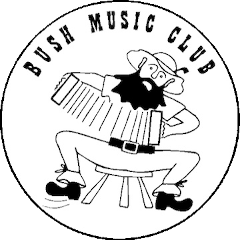Part 1 Part 3
Thanks to Bob for sharing his collection & to Ralph Pride for the photos.
Bob's collection

Aboriginal Clapping Sticks

Rounds
Wikipedia on Bones - check out the Ancient Greek example!
1998 post by Bob Bolton on the American-based Mudcat Cafe online discussion group
G'day
I know that the main criterion was how good they sounded. One old butcher I talked with worked as a boner in a large meatworks in Sydney, during the 1930s. He said that the Vaudeville performers would spend hours looking through the discarded bones "for the Ivory ones, the big solid ones".



Even then, when cattle were still walked in from cattle stations (ranches) it was hard to get as heavy and hard a bone as they liked for stage use. Their need was a high, sharp sound that penetrated and carried to hundreds of people without any amplification. I have a solid bone set from this era. They are not rib bones but a pair sawn from a single shin bone and ground to final shape. They carry marvelously but are too aggressive for use in a friendly session!

Drawing by Bob of old bones (BMC archives)
 Old bone
Old bone I have one very old rib bone (no pair, alas) that is larger than I have ever seen on the sort of beast that ends up as steak today. This is an almost flat section about 8 1/2" by 1 1/4". That was one hell of a big steer! I suspect that it would be too slow to play rhythm to modern music, anyway.
Lignum Vitae (now rare; hard, heavy tropical wood) could be crafted to get much the same sound. This was a definite standard in some areas of Vaudeville (a request for Lignum Vitae from one of the old bones players I met a Festival led me into this area) but it is hard to get today. I try for a deeper 'clonk' sound at good volume to suit smaller grouping - and can make use of microphones today.
 Lignum Vitae bones
Lignum Vitae bones
Ligmun Vitae & Walnut bones
I have seen several sets of manufactured bones from the 40s and 50s - narrow (~5/8" - 3/4") and possibly bent from sections cut from heavy straight bones (suggested by the curvature of the cross-section). I have no idea if these were sold in the same form earlier, but that seems logical, as their heyday was much earlier. Their sound is high and sharp and they are fairly small (~6 1/2" long) so they could play very fast.
I talked with a man who was in a children's home in the 30s. The kids there all played wooden bones, but their trick was to steal the slats from the shutters on the local train carriage windows. They cut these to length and played them as straight sections (I am definitely of the bent bone bent!). He said the wood was often too soft for a good sound, so they hardened the striking surfaces in the flame of a candle.
I am interested to know what woods are used in America, as well as Oak. We have a number of very heavy and hard woods in Australia - currently I'm looking at Ironbarks: typically 1.05 - 1.1 specific gravity - i.e., they sink like a stone in water. These are durable and (if finely crafted) can produce a good medium/high sound for large sessions and acoustic dance music.
I gather the American playing styles favour the multiple approach - at least one set in each hand. I play the more British style with a single set, striving for high speed when needed by rapid action, not multiple patterns. However, we do see two-handed players among the old-timers - I have seen one really good player work with eight bones!
Some of the stage performers used two sets for complex counter-rhythms to accompany stories. I remember standing enthralled around the campfire at a Festival around 1990 while one fellow gave a long description of a train journey - complete with all its rhythms.
I had better stop rattling away for the moment!

Commercial Bakelite Rythm Bones Bakelite bones were patented in 1948 by Joe Birl in Pennsylvania, USA. (colour changed to show writing)
~~~~~~~~~~~~~~~~~~
Photos of Bones & Cheatin' Bones found in 1998 photo album

1. Pair made from animal bone

2.

3.

4.

5.

6.

7.

8.

9.

10.

11.

12.
~~~~~~~~~~~~~~~~~
Ralph's collection

Bob's bones probably came from this set.



Very early bones (made of bone), given to Ralph by Jamie Carlin years ago.
~~~~~~~~~~~~~~~~~~~~~~
Bones belonging to Jude Stuart that were around when the photos were taken.


(Photos - Ralph Pride)
************************************************************************************************* *************************************************************************************************

No comments:
Post a Comment